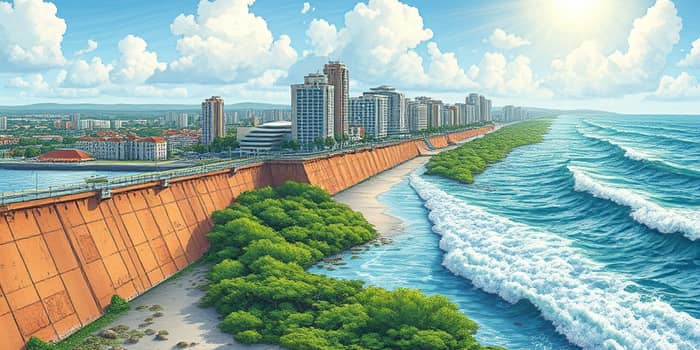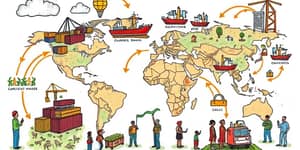
Coastal cities around the world are witnessing an unprecedented surge in the financial burden of adapting to sea level rise and flooding. From Miami’s sunken streets to Guangzhou’s waterlogged neighborhoods, the stakes have never been higher. Communities, policymakers, and investors must act promptly to avoid staggering losses and human displacement.
Global adaptation expenditures for coastal zones are skyrocketing. Under high-emissions scenarios, projections for damages exceeding $3 trillion by 2100 underscore the magnitude of the challenge. By 2050, cities could face up to $1 trillion in combined sea level and flood-related costs, dwarfing many national budgets.
In developing regions, annual adaptation finance needs—once estimated at $28 billion by 2030—have now soared to $300 billion per year by 2050. This dramatic revision reflects both accelerated sea level rise forecasts and the growing recognition of social equity in protecting vulnerable populations.
Major metropolitan areas such as Miami, Guangzhou, and New York each hold at-risk assets valued between $2–3.5 trillion. The sheer scale demands both immediate emergency action and long-term strategic planning.
Sea level rise and intensified storm surges threaten not only private property but also critical infrastructure—ports, airports, energy grids, and wastewater systems. The ripple effects extend to tourism, real estate markets, and insurance industries, destabilizing local and global economies.
By 2050, an estimated 800 million people living in 570 cities will face half-meter sea level increases. Regions such as the U.S. east coast are experiencing rise rates two to three times the global average, while Asian hubs like Shanghai, Mumbai, and Dhaka confront catastrophic exposure.
Adaptation approaches fall into two broad categories: traditional “gray” infrastructure, such as seawalls and dikes, and “green” nature-based solutions, like mangrove and wetland restoration. Each has its merits, but recent studies reveal that sustainable green infrastructure demonstrates more benefits over the long term.
In South Florida, households expressed willingness to pay $61–63 more annually for mangrove and salt marsh restoration, compared to $25 for seawall maintenance. These preferences reflect the broader community recognition of green solutions’ ecological and recreational co-benefits.
Despite escalating needs, a significant funding gap persists, particularly in less developed regions. Without intervention, delays in financing will drive adaptation costs even higher.
Governments and institutions are exploring innovative financial mechanisms to bridge these divides. Among the emerging tools are:
For example, the U.S. Department of Defense plans to allocate $5.1 billion in 2025 toward resilience upgrades on military installations, signaling an institutional shift toward proactive adaptation funding.
To navigate the looming crisis, stakeholders must adopt a multi-pronged approach. Practical initiatives include:
Local governments can leverage digital tools—such as flood modeling and early warning systems—to engage residents and businesses in resilience efforts. By combining scientific data with participatory governance, communities can build trust and ensure equitable resource allocation.
The window for cost-effective action is narrowing. Every year of delay compounds both economic and human tolls. Yet, by embracing an integrated strategy that values natural ecosystems alongside engineered defenses, coastal cities can forge a path toward sustainable resilience.
Innovative financing, community engagement, and cross-sector collaboration will determine whether we face spiraling losses or a more hopeful horizon. The choices made now will shape coastal economies—and the lives they sustain—for generations to come.
In the face of rising seas, the message is clear: act decisively today to safeguard tomorrow’s coasts and ensure that beauty, prosperity, and biodiversity endure on the world’s shorelines.
References













